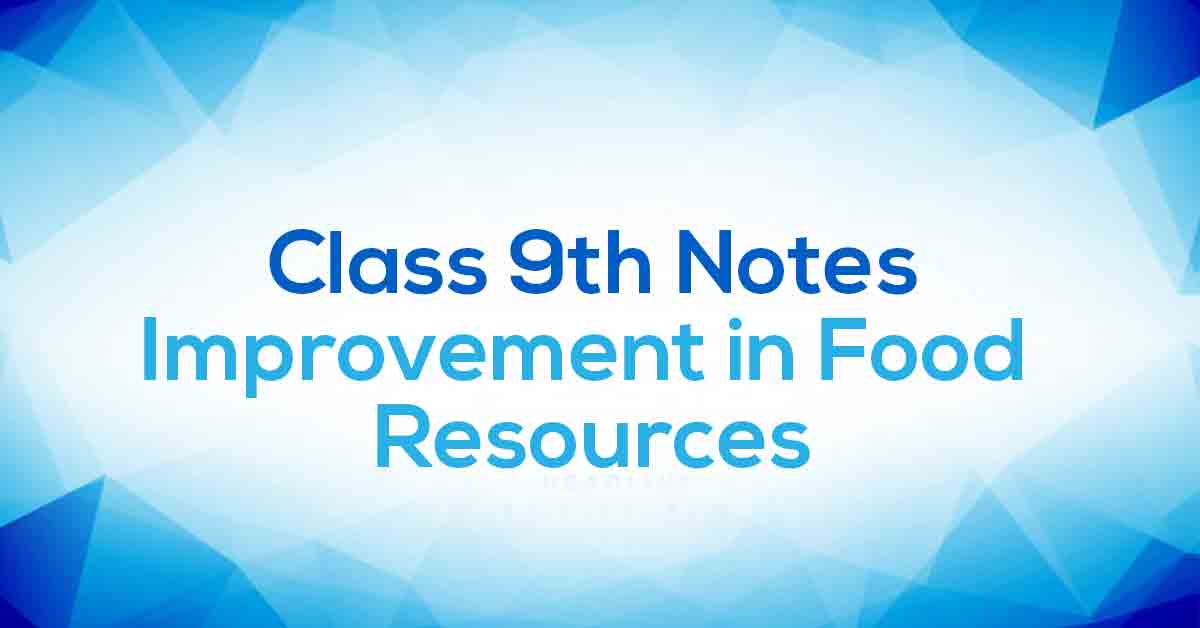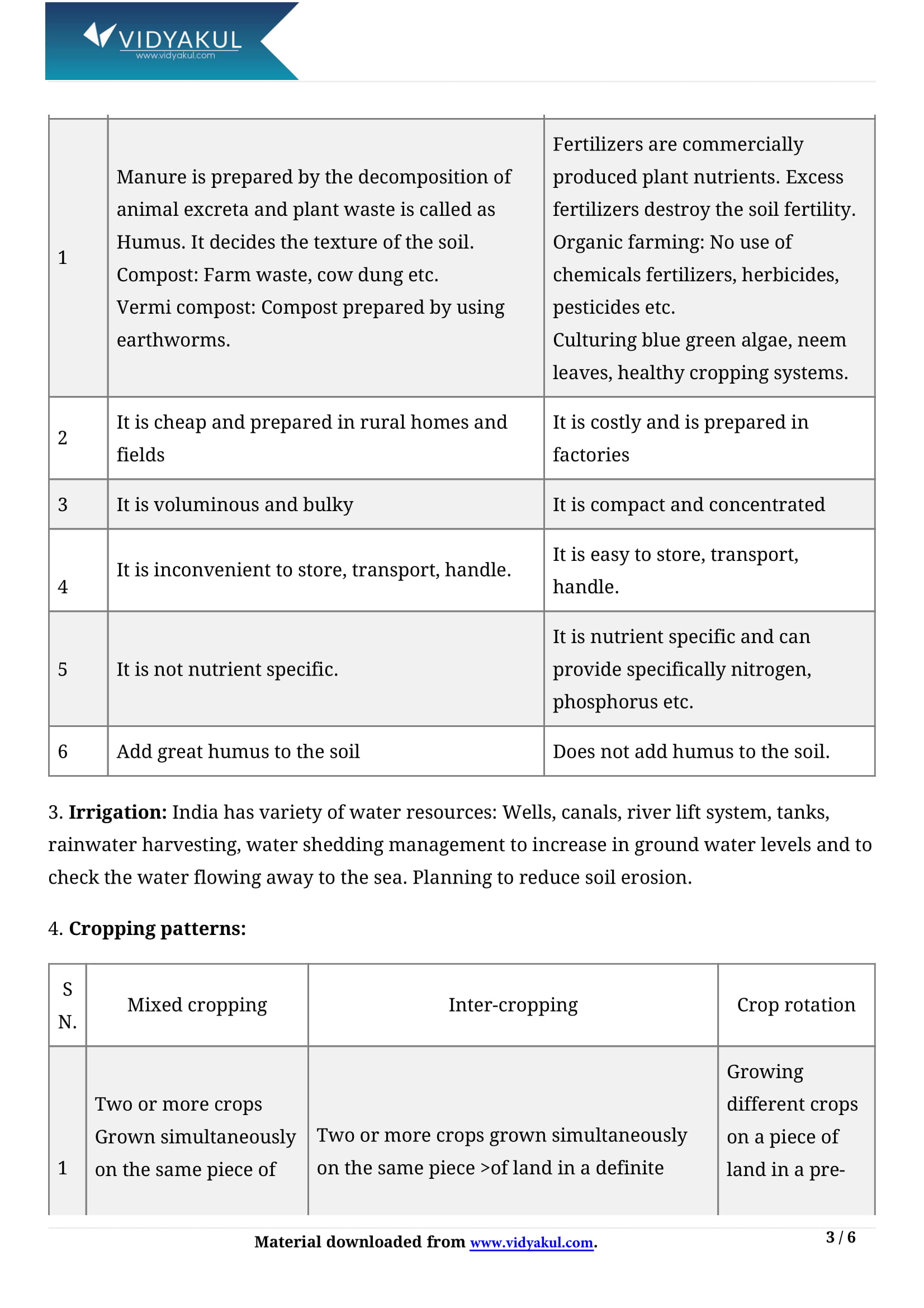Improvement in Food Resources Class 9 Notes

Chapter 15 Improvement in Food Resources
This chapter covers the topic of “improving food resources”. The NCERT notes for Grade 9 Science Chapter 15 presented in this article contains all in-text questions and detailed answers to help students understand this chapter and prepare for the exam.
Vidyakul's experienced experts have developed these notes in a detailed and structured way to help students understand the concepts. Students can download the notes and prepare for the final exam. Students can practice more than 1,420 questions from 64 different books on Vidyakul for free to prepare for the exam. Read on to learn more about NCERT notes for Science Chapter 15 Chapter 9.
CBSE CLASS 9th CH-15
Points to Remember
We have provided some important points from NCERT Class 9 Science Chapter 15 Improvement in Food Resources that students must remember. Students can refer to the points below:
- Food crops include wheat, rice, maize, pulse, vegetables, spices and fruits.
- Commercial crops include cotton, jute, flax, hemp, etc.
- On the basis of seasonal variation, crops are of two types – Rabi crops and Kharif crops.
- Rabi crops or winter season crops are planted in November and harvested in April. Such crops are wheat, barley, gram, pea and mustard.
- Kharif crops or summer season crops are planted in June and harvested in October. Such crops are maize, millets, groundnut, soyabean, cotton, jute, etc.
- Irrigation is the alternative source of water other than rainwater and is utilised to supply required and timely water to crops for optimum productivity.
- Agronomy deals with rearing and management of crop plants. Horticulture deals with the study of fruits and flowering plants, their growth and development.
Students can access all important points for NCERT Class 9 Science Chapter 15 Improvement in Food Resources on Vidyakul for free.
Topics and Sub-topics
Organisms need food to survive. Food contains proteins, carbohydrates, fats, vitamins and minerals necessary for development, growth and health. People get their food from two sources: agriculture and animal husbandry. As you all know, the population is increasing day by day and the demand is being reached. Supply must be increased. Since we have very little land, farming the land needs to be more efficient in order to increase food production. India witnessed the Green Revolution and the White Revolution, contributing to an increase in food production. But we must also ensure that we do not destroy our natural resources through the overproduction of food. This is why we need sustainable agriculture and animal husbandry to avoid damaging the ecosystem.
Read this chapter to learn more about improving your food resources:
Few Important Questions
What are the uses of ‘Intercropping’?
1. Saving space and resources 2. Repelling pests 3. Providing nutrients for neighboring plants
What are the disadvantages of ‘Weeds’?
1. Efficiency of irrigation is reduced 2. Land value reduces 3. Crop production decreases
What is the meaning of ‘Organic farming’?
Organic farming is a production system which avoids or largely excludes the use of synthetically compounded fertilizers, pesticides, growth regulators, genetically modified organisms and livestock food additives.
Learn more about in Improvement in Food Resources Class 9 Notes pdf.
Download this solution for FREE Download this PDF









